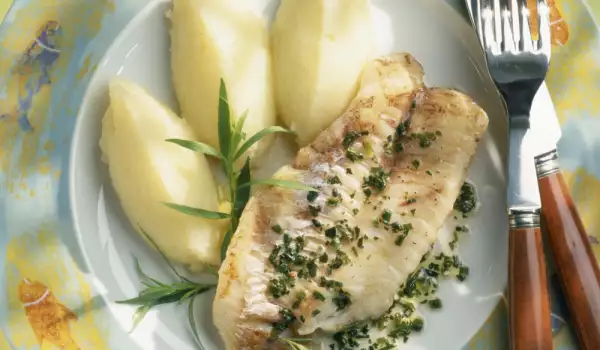Carassius is a genus of freshwater fish. Carassius belong to the carp family. They are found in water bodies of stagnant water. Carassius feed on seaweed. Some species are omnivorous. A curious fact about these fish is that they can live up to 2 days out of water, as long as they are kept wrapped in a moist towels.
Species of Carassius
A couple examples of Carassius include the goldfish and Prussian carp. Prussian carp has an elongated body. Its large scales are distinguished by its silver tone. It grows faster than its golden cousin, reaching up to 15 3/4″ (40 cm) long. Its weight can exceed 2 lb (1 kg) in some cases.
The goldfish is recognized by the copper or golden-brown color of its scales. Sometimes certain body parts of this species have reddish tones. Goldfish are relatively larger than Prussian carp and can weigh up to 6.5 lb (3 kg). Their length is about the same as Prussian carp.
Characteristics of Carassius
Prussian carp inhabit swampy water bodies, they prefer slow running water. Muddy bottoms are especially enticing for them. Prussian carp prefers to eat phyto- and zooplankton. During the colder months, Prussian carps usually burrow in the mud and fall into a lethargy. Sexual maturity in Prussian carps occurs between their 2nd and 4th year of life, mating season is between the month of May until June. Usually, the temperature of the water needs to have reached about 60°F (15 °C). The roe sticks to the aquatic vegetation, where it is then fertilized.
Goldfish are also attracted to swampy water bodies. Like its cousin, this species also spends the winter in the mud. Goldfish eat aquatic vegetation and food thrown by fishermen. Goldfish reach sexual maturity during their 5th year of life, sometimes even during their 4th. To release their roe, the water temperature needs to be at least 60°F (14 °C). The roe sticks to the aquatic vegetation and is fertilized right away. This process continues for 2-3 days.

Catching Carassius
Carassius are relatively easy to catch, making them a traditional target even for inexperienced fishermen. But before you throw your tackle you need to explore the locale and make sure that the conditions are right for the presence of Carassius in the water.
If you are unsure about the presence of fish in the given water body, look for any bubbles in the water - these can be a sure sign about the presence of fish from this genus. If you intend to use groundbait, don't overdo it. Your goal isn't to feed the fish, only to attract its attention. You can get groundbait from specialized stores or use products from home, such as crumbled bread.
Carassius are typically caught by bottom fishing and floats. For bait you can use corn, boiled wheat, maggots, dough and others. Sometimes the fish tend to bite if using a particular bait and the next thing you know they show absolutely no interest. This is why more experienced fishermen recommend being prepared with several types of bait. Float fishing, otherwise, can start as early as the 1st days of spring. Float fishing is suitable when we're not going for larger fish. Otherwise, you're better off bottom fishing.
Cleaning Carassius
As already mentioned, Carassius are not large fish but do have a lot of bones. Before cleaning them, wash them well with cold water. Then remove the scales. Smaller specimens, up to 3.5 oz (100 g), you can fry whole, removing the heads and tails if desired. Halve larger fish down their spine and remove the insides and anything unusable. Then you can wash the meat one more time and dry it. Carassius often bear the odor of the water body they had been inhabiting.
To get rid of it, you can soak the cleaned meat in milk for awhile. Since the majority of fish you catch will be primarily female, you may find roe in their bellies. Scrape the roe off, wash it. Leave it aside for a short time, until the water is released, salt it and then put it in a jar. Keep the roe in the fridge for 2 weeks in this state. Once its color turns orange, it's good for consumption.

Cooking Carassius
Carassius meat isn't the most high end but it can't be said that it's unappetizing, as long as it's cleaned and prepared properly. It's true that these fish have a lot of bones but when frying, the smaller ones among them melt, so you're only left to deal with the larger ones. Larger Carassius can be used in a greater variety of dishes than the small ones. They can be roasted, boiled, smoked, breaded or marinated. They go well with tomatoes, carrots, onions, garlic, potatoes and boiled beans. Suitable spices for Carassius are parsley, dill, black pepper, lovage, turmeric and others.
Benefits of Carassius
Carassius contains beneficial vitamins such as A, B, C, D and E. It's also a source of copper, zinc, manganese, iodine and others. Consumption of this genus of fish (and not only) has an overall strengthening effect on the entire human body, it stimulates brain function and improves mental abilities. Eating fish is also good for vision, which is why scientists recommend eating fish at least once a week.









